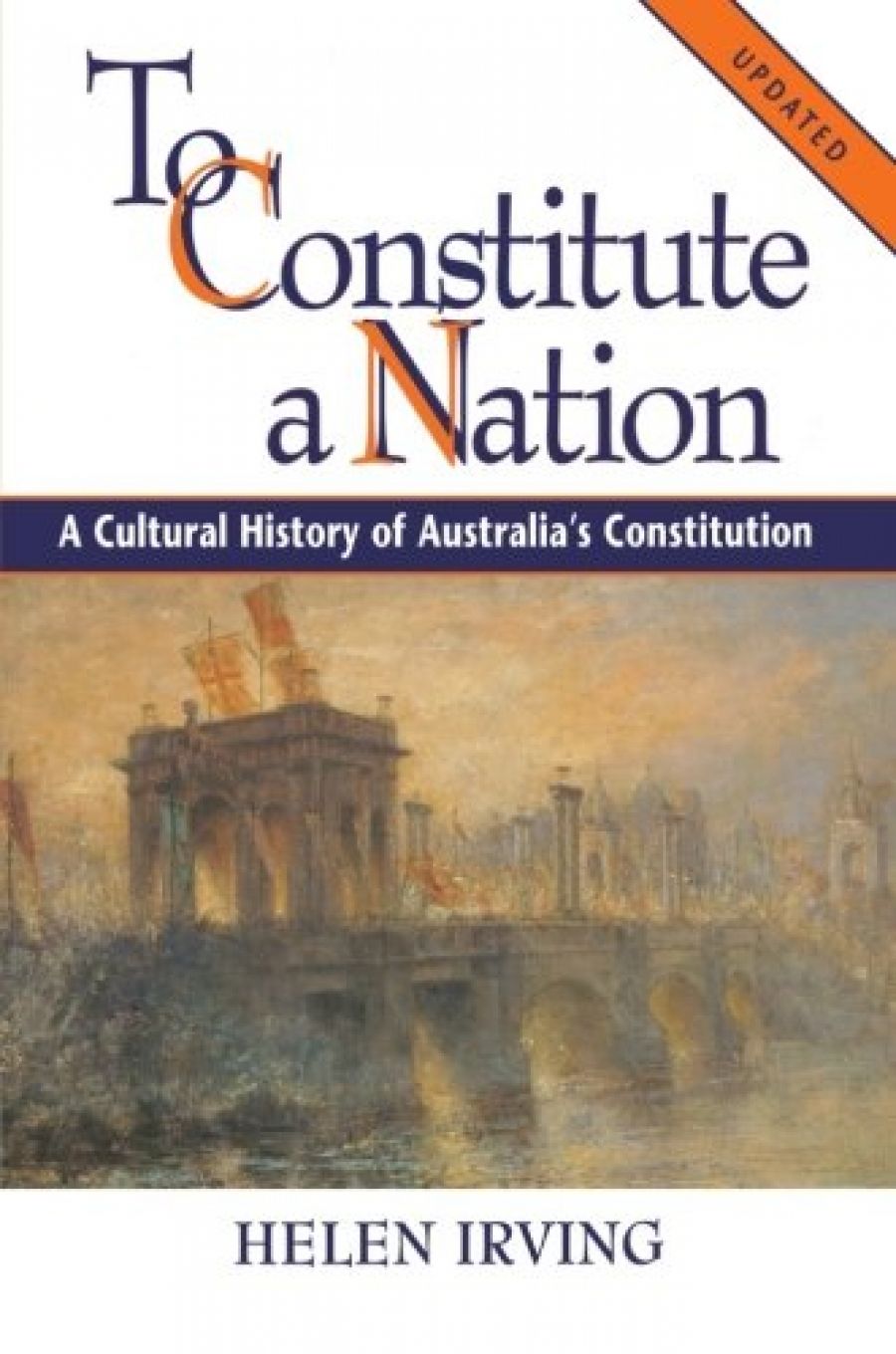
- Free Article: No
- Contents Category: Politics
- Review Article: Yes
- Article Title: A Concentrated Act
- Online Only: No
- Custom Highlight Text:
Remarkably to some, this cultural history of the drafting of the Australian constitution is an exciting and triumphant book. Helen Irving manages to fill in adroitly the blank pages of our constitution as a cultural artefact and to celebrate the complicated processes whereby Australia became a nation on the first day of the new century.
To actually write the framework for a nation by agreement indeed represents a concentrated act of the imagination. Moreover, it demonstrated, in the closing years of the nineteenth century, a profound optimism in this country’s future. As Irving rightly argues, the nation of Australia itself was the product not of external pressure or crisis, nor due to any religious or ethnic imperatives, but was created in a time of peace. This achievement, and the codification of our national powers and institutions, despite their obvious limitations, rightly deserves celebration.
- Book 1 Title: To Constitute a Nation
- Book 1 Subtitle: A cultural history of Australia’s constitution
- Book 1 Biblio: CUP, $49.95 hb, 272 pp
It also needs to be remembered that the centrifugal pressures that were placed upon the drafting of the constitution were often very powerful. Thus at times in the 1890s Queensland came close to separating into North, Central, and Southern Queensland. Not surprisingly, these regions held very different views on whether or not federation was desirable. It is important to be aware that Section 7 of the Australian Constitution reverberates with this potentially separatist history. Although on the face of it seemingly prosaic and insignificant, this section of the Constitution could, as Irving argues, itself be the subject of an entire book.
Like Queensland, Western Australia also experienced significant regional disagreements, ‘with large sections of the colony outside the capital hostile to the incumbent parliamentarians, and a powerful ‘Separation for Federation’ movement active in the eastern goldfields’. However, unlike Queensland, Western Australia, which was laggardly in submitting the Constitution Bill to its people, was unable to have a similar provision to Section 7 inserted in the Constitution.
In the eastern goldfields of Western Australia the separatist movement was extremely strong. In fact, almost 28,000 signatures entreated Britain that the region be made a separate colony in order to join the other colonies in an Australian Federation.
Not surprisingly, Helen Irving devotes considerable attention to the role of women that submerged half of the nation in promoting the Federal cause. Thus, for example, the Hay Women’s Federal League was extremely powerful in advancing the cause of federation and, in fact, in promoting Federal Leagues in cities like Sydney. As Irving acutely points out, many of these country townswomen were the very bourgeois types that magazines like The Bulletin so often mocked as ‘wowsers, puritans and patronisers’. They were, however, she argues, nonetheless remarkable. So successful was the Hay Women’s Federal League that on the day of the referendum all the main streets of Hay were decorated with WFL banners, badges and ribbons. This festive approach to the creation of the nation seemed at odds with the more male centred cerebral and sombre approach.
As well as stressing the role of women in the success of the Federation movement, Irving rightly concludes that the forces of labour were almost entirely unrepresented in the formal Federation processes. At the same time, she concedes that the suggestion that this was a deliberate conservative strategy does not really hold water. Indeed, Federation was enormously enabling to the labour movement. This was in large part because it created a National Parliament through which the policies of labour could be implemented.
This lucid and important book goes a long way to answering the question of how it was that in the last decade of the nineteenth century regional and colonial interests in Australia were channelled towards creating a more or less united nation. Federation did not occur mainly due to altruism. As she concludes, ‘It was in the imagined nation that those with particular economic axes to grind saw their solution.’
At a time when the xenophobic Pauline Hanson still receives such national publicity, it is perhaps salutary to remember that the majority of the population who participated were, in Irving’s words, ‘ultimately enticed by the vision of “a self-governing nation in these southern seas’”, the creation of which ‘cannot be long delayed if Australia is to be retained for white men’.


Comments powered by CComment